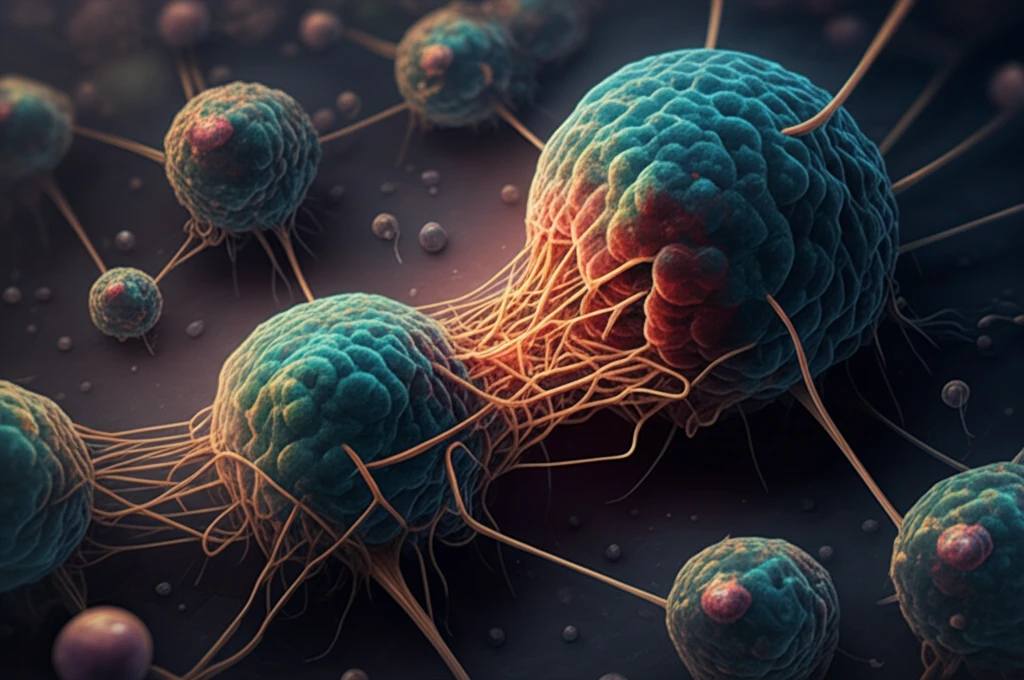
Unlocking Cancer's Secrets: How Reversing Cell Changes Can Fight Drug Resistance
"Scientists are exploring how to manipulate cell behavior to overcome treatment barriers and improve cancer outcomes."
Cancer remains a significant global health challenge, with treatment resistance being a major hurdle in achieving long-term remission and survival. While advancements in medical and surgical interventions have improved overall survival rates, the ability of cancer cells to adapt and resist therapy continues to pose a substantial obstacle.
One of the key mechanisms by which cancer cells develop resistance is through a process called epithelial-to-mesenchymal transition (EMT). EMT allows cancer cells to transform and become more invasive, mobile, and resistant to traditional treatments like chemotherapy and radiation. Understanding and targeting EMT is now a major area of focus in cancer research.
Exciting new research is exploring ways to reverse EMT, potentially re-sensitizing cancer cells to treatments they previously shrugged off. By understanding the molecular switches that drive EMT and identifying compounds that can flip them back, scientists hope to unlock new strategies to overcome drug resistance and improve outcomes for patients with cancer.
What is Epithelial-to-Mesenchymal Transition (EMT)?

Epithelial-to-mesenchymal transition (EMT) is a fundamental process in which epithelial cells, which are tightly connected and form a protective barrier, undergo a series of changes to become mesenchymal cells. Mesenchymal cells are characterized by their ability to migrate, invade, and resist apoptosis (programmed cell death). While EMT plays a crucial role in normal development and wound healing, it can also be hijacked by cancer cells to promote tumor progression and metastasis.
- Loss of Cell Adhesion: Epithelial cells tightly bind to each other, but during EMT, they lose these connections.
- Increased Mobility: Mesenchymal cells can move more freely than epithelial cells, aiding in cancer spread.
- Resistance to Cell Death: EMT makes cancer cells less susceptible to treatments like chemotherapy.
- Invasion of Tissues: Mesenchymal cells can break down surrounding tissues, helping the cancer spread further.
The Future of Cancer Treatment: Reversing EMT
The research discussed highlights the exciting potential of reversing EMT to overcome drug resistance in cancer. By targeting specific molecules involved in EMT, such as cFLIP, scientists may be able to re-sensitize cancer cells to traditional therapies and improve treatment outcomes. While further research is needed, these findings offer hope for more effective and personalized cancer treatments in the future. The ongoing investigation into the mechanisms of EMT and the development of new therapeutic strategies hold the promise of transforming cancer care and improving the lives of patients worldwide.
